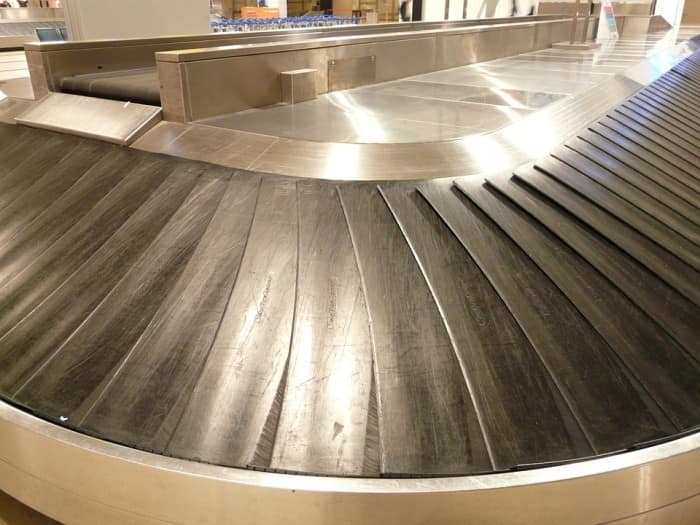
Whether it’s a tiny conveyor belt at the cash register in the local supermarket or a conveyor in a food processing plant, conveyor belts are a part of daily lives. However, they go through the wear and tear cycle like any other piece of machinery so it’s necessary to maintain them properly.
Especially vulnerable is the belt itself. Depending on the type of rollers, the angle of the belt, and the cargo the belt transports, it is in grave danger of breaking. Luckily, there are several methods on how to prolong the lifespan of a typical conveyor belt.
Cleanliness is half the health
For humans, cleanliness is the surest way to stay healthy and the same principle can be applied to conveyor belts. Namely, dirty belts have a greater chance of slipping or reducing the carrying capacity of the belt itself. Grime, dust, and grease residue build up on individual components, thus reducing the life of the engine drive underneath.
Although the cashier at the local grocery shop uses a wet cloth to wipe the belt, industrial conveyors use steam cleaning systems. These are designed to clean the belt thoroughly by eliminating all chemical residues.
Furthermore, the steam sanitizes the surface being treated, as the work surface of the belt. Whether you use a steam cleaning system or a dry vapor steamer, the result will be the same: a clean belt using the least amount of water necessary.
Regular inspection
In facilities that have installed automation, there is no need for a worker to physically inspect the belt or even take notice of it. Although this method increases the efficiency of a factory or a warehouse, it possesses a maintenance challenge.
There is no such thing as a casual belt inspection so workers have to carry out special inspections of the state the belt is in. These are crucial if you want to avoid a loss in tension which can lead to slippage that reduced the lifespan of the conveyor significantly.
One of the most common repairs and maintenance methods is the tightening of the belt. It rests on two pullies at each end and these are the points where tension is increased at. The belt most often becomes loose because you are loading freights that are over the belt’s maximum bearing power. Extra weight puts stress on the motor, the bearings, and the belt itself, shortening their lifespan.
What kind of rollers are you using?
The types of conveyor belts vary based on their use. The setting of the conveyor dictates the materials it will be made from but in general, belts are made from some kind of rubber. However, when it comes to rollers that are set right under the belt, the material they are usually made from, steel, is not very durable.
In fact, composite rollers have a 60% better performance and durability than steel ones. When it comes to safety benefits of composite rollers then their lightweight construction reduces the risk of harm to operators and pinch point injuries. Furthermore, the smart design reduces the build-up of heat and friction that can cease the operation of a conveyor belt.
Carefully selecting the model you need
Essentially, you are going to select the model of the conveyor belt according to the needs of your business. Think about what cargo will the belt mostly convey; how much does it weigh, what are its dimensions, how fast will they have to travel, etc.
The above-listed factor will determine the model of the conveyor belt you will order. Getting the model right is important because an inadequate conveyor belt will have its lifespan shortened by improper use. Just think of the small conveyor at a cash register carrying ore and you’ll realize how important it’s for the belt to match the cargo in aspects imaginable.
Proper storage
Whether you are about to assemble the conveyor belt for the first time or you have bought a spare belt and what to put it away, storing the belt in a proper manner is essential. Firstly, you shouldn’t take the belt out of its original packaging. Secondly, the room where you store the spare belt should ensure it is protected against contamination, damage, moisture, UV light, and extreme changes in temperature. This is easier than it sounds, as any darkroom and an opaque plastic wrap will suffice in most cases.
Aligning the belt correctly
The first time you install the belt is the crucial timing to help prolong its lifespan. Namely, the belt needs to be in perfect alignment with the rest of the structure so it rotates smoothly and to the inch in the bearing created for it.
Much like building a bulldozer, the belt should be installed one roller and pulley at a time to prevent distortions of the bearings and overstretching the belt. After each adjustment, the new belt to rotate a few times to align itself with the rest of the conveyor.
As you have seen from our pieces of advice, the very day you install a conveyor belt is the first day you start maintaining it. From then on, regular checkups and thorough steam cleaning ensure all the parts of the conveyor, mostly the belt, operate properly. The less stress and excess load the conveyor is exposed to, the longer its lifespan will be.
